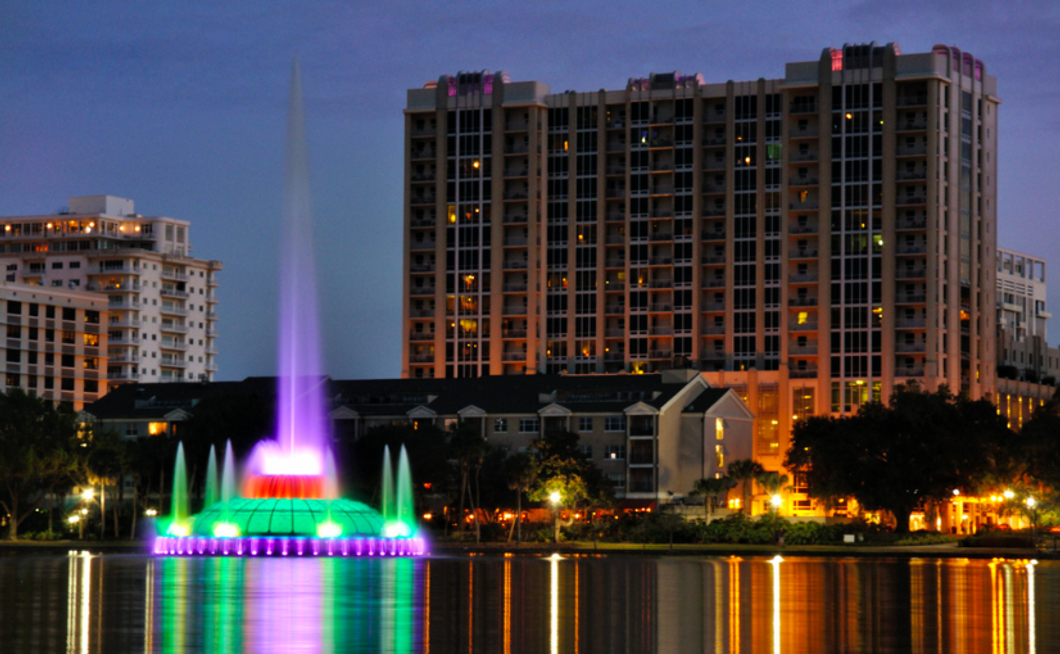Many African-Americans living in Orlando, Florida have a family history that in some cases, go back as far as the 1800's. The reason they migrated to Orlando was the lack of segregation in this small southern town. Once the population of African-Americans began to grow, the natives of Orlando forced these families to the west side and Division Street was the unofficial segregation line.
Through the 1970's, community leaders and representatives kept guard and helped the citizens of this small part of west Orlando business' to flourish and be sustainable. Then along came the developers and small interest groups that convinced the political representatives that change is inevitable and if they were not on board they would lose out on the profiting from the people they are protecting.
The gentrification of "The City Beautiful" has been a controversial topic for many decades. Anyone who has driven into downtown Orlando and ended up on the west side of I-4 can see the stark difference in the landscape from east to west.
On August 7, 2018, the mayor of Orlando, Mr. Buddy Dyer, gave a state of the city speech outlining the reasons Orlando is an awesome place to live. Now, I agree with the statement. Of course, Orlando is awesome. The arts, sports, sunshine, theme parks, and diverse entertainment and culture gives this town it's unique personality and draws visitors from all over the world. I am one of those people that came in 1989 and never left.
However, the town keeps growing and more people come to visit and stay. We have a small-town mentality with a big city problem. The median wage in Orlando is currently at $49,187 per year and the average 2-bedroom 1 bath home/apartment ranges from $1,200 to $2,000 per month, which is a range of 30% to 49% of the average salary.
In a recent article in the Orlando Sentinel, Bill Zimmerman wrote, "Metro Orlando homes rank among the least affordable in the south. In addition, for an average median household to afford a home in the Orlando area, you would have to move to Kissimmee, Deltona, Pine Hills, The Villages, or Leesburg."
Which brings me to item Number 43 on Mayor Dyer's list: "Making sure everyone who wants to live in Orlando has access to safe, affordable housing." A map of the city's current listings of available homes/apartments shows a cluster of apartments complexes east of I-4 and north of the East-West Expressway and the closest available place for someone from the west side to relocate. But, the median range is $1,200 to $2,000 per month.
So, I took an early Sunday morning drive starting along Lake Underhill from east to west. I can recall how this road looked in the 1990's when I was new to this area. The changes in the landscape are very different from 25 years ago; the neighborhoods along this road have pristine entrances and the roads are well kept. The tree-lined road was pleasant and welcoming.
As I turned onto Robinson Street, the landscape of the city went from high end home and apartments, office buildings, restaurants, and stores, to empty lots once I crossed over Division Street on the west side of I-4. I turned on to South Parramore Avenue and besides the Orlando City Stadium on the corner of Pine Street, all the other buildings were fenced - some with barbed wire, run-down, and neglected. What happened to the homes and businesses that once lined these streets? The displacement of the residents on Parramore Avenue and surrounding neighborhoods are being taxed while they are being promised a better life by the "Creative Village Development Plan."
One of the disappointing issues stemmed from a community that entrusted men and women they believed in. They thought these champions of their community had integrity and promised to take responsibility for them. Decades ago that was true, but those days are gone to the all mighty dollar and the power it represents. Corporate greed is more powerful than a community of people that don't understand the system. Eventually, this section of Orlando will become an archive in our local museum. Photos and artifacts will be collected, but the true story of how this happened will not be among those precious mementos.
And now, the city beings to increase the property taxes of the people steeped with history and generations of community. Little by little the buildings will be destroyed to build larger apartment complexes and homes that will be too expensive for the families of the Parramore community to return. More sports venues will be constructed as well as high-end restaurants and shopping plazas to keep the tourists happy as well as the corporations funneling money into these developments. Downtown Orlando will compete for tourist dollars that in the past was mainly for the amusement parks just down the road.














